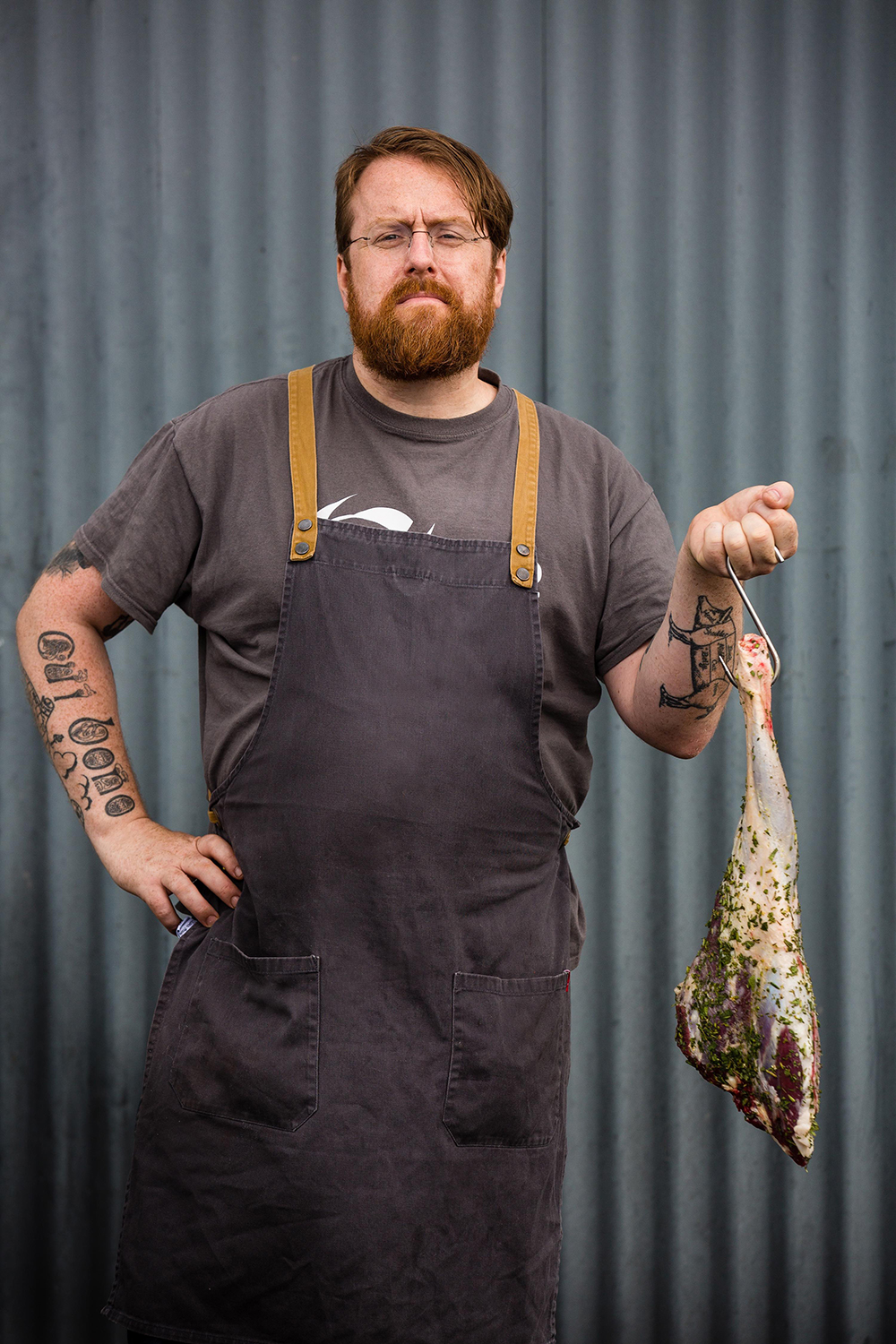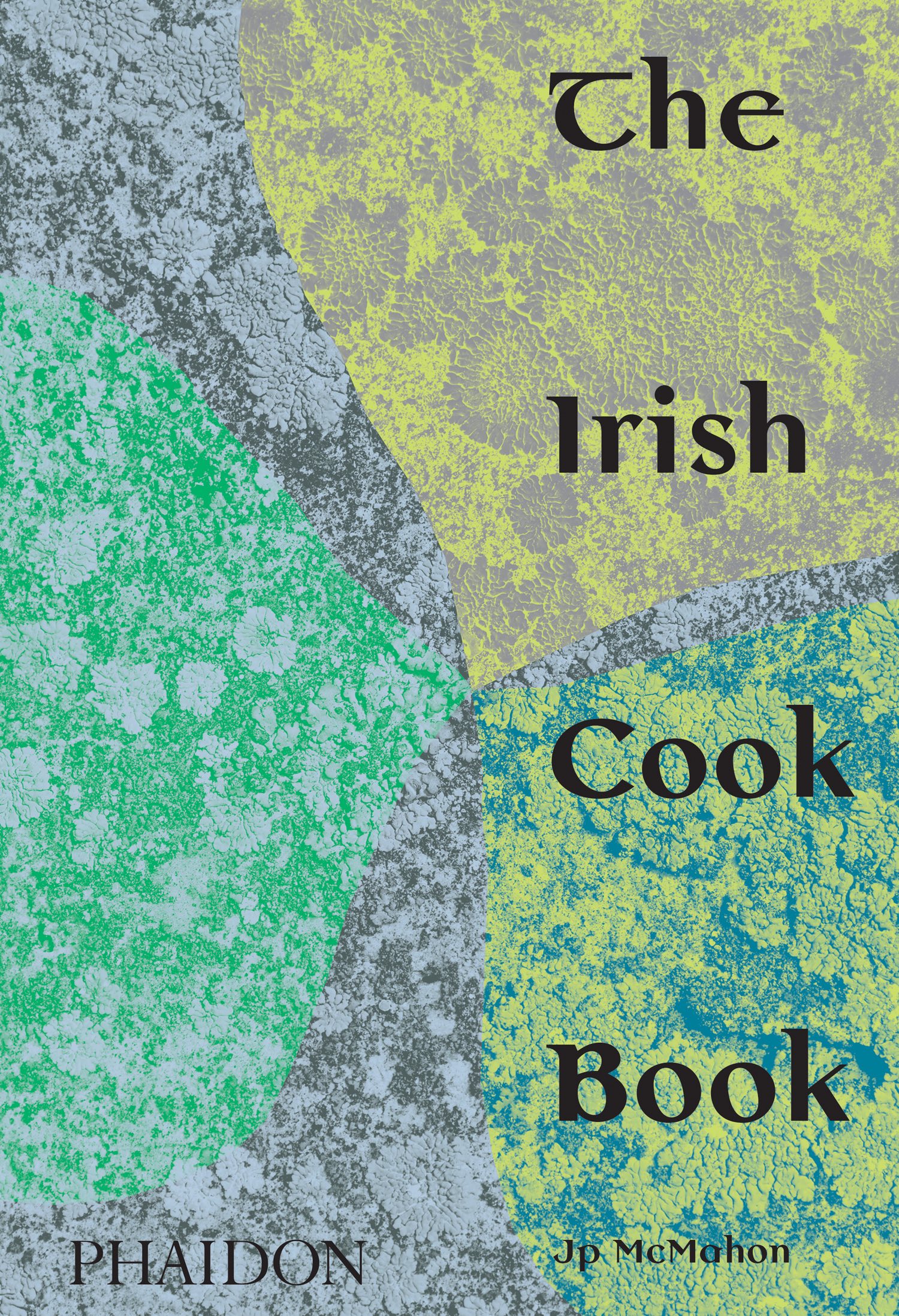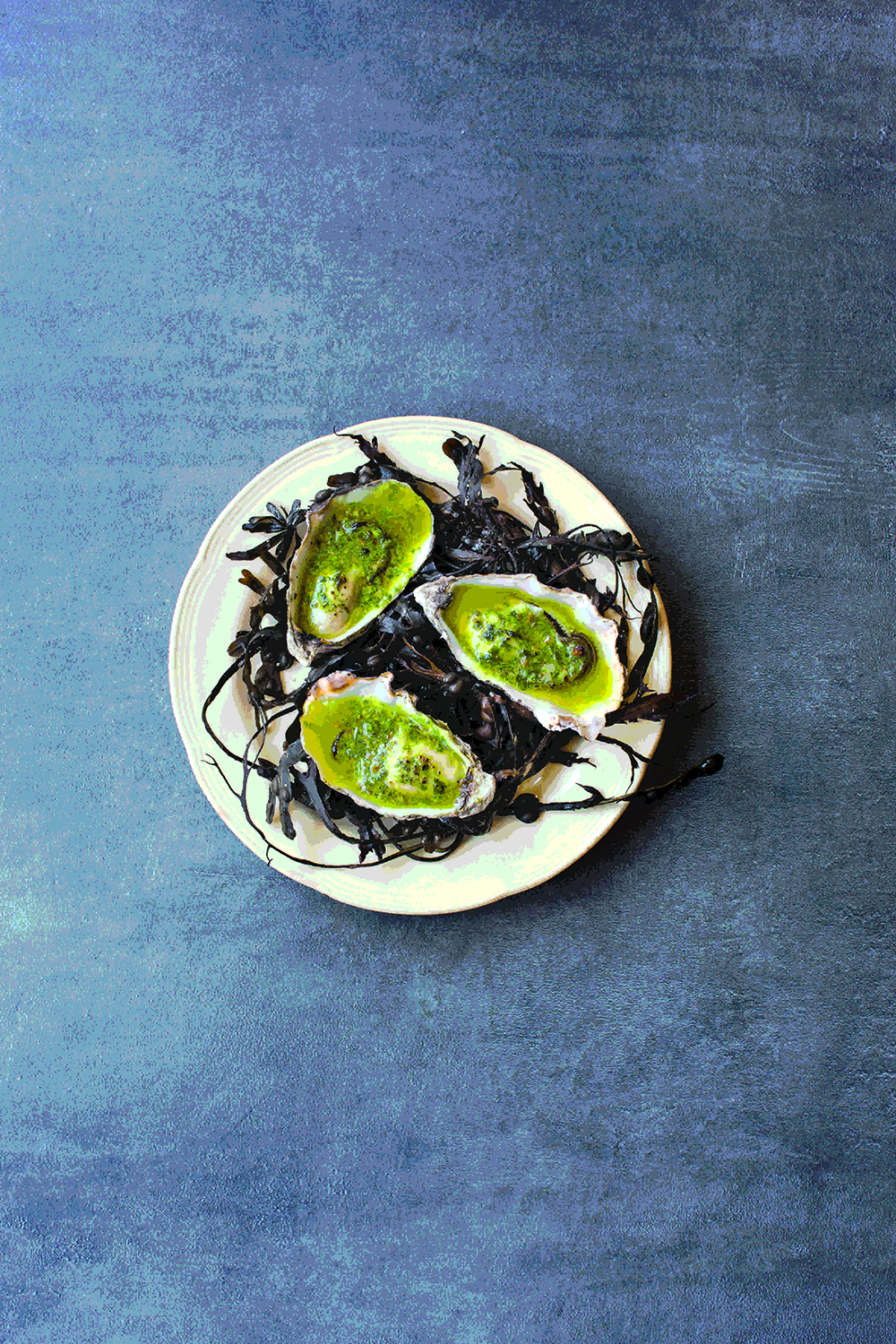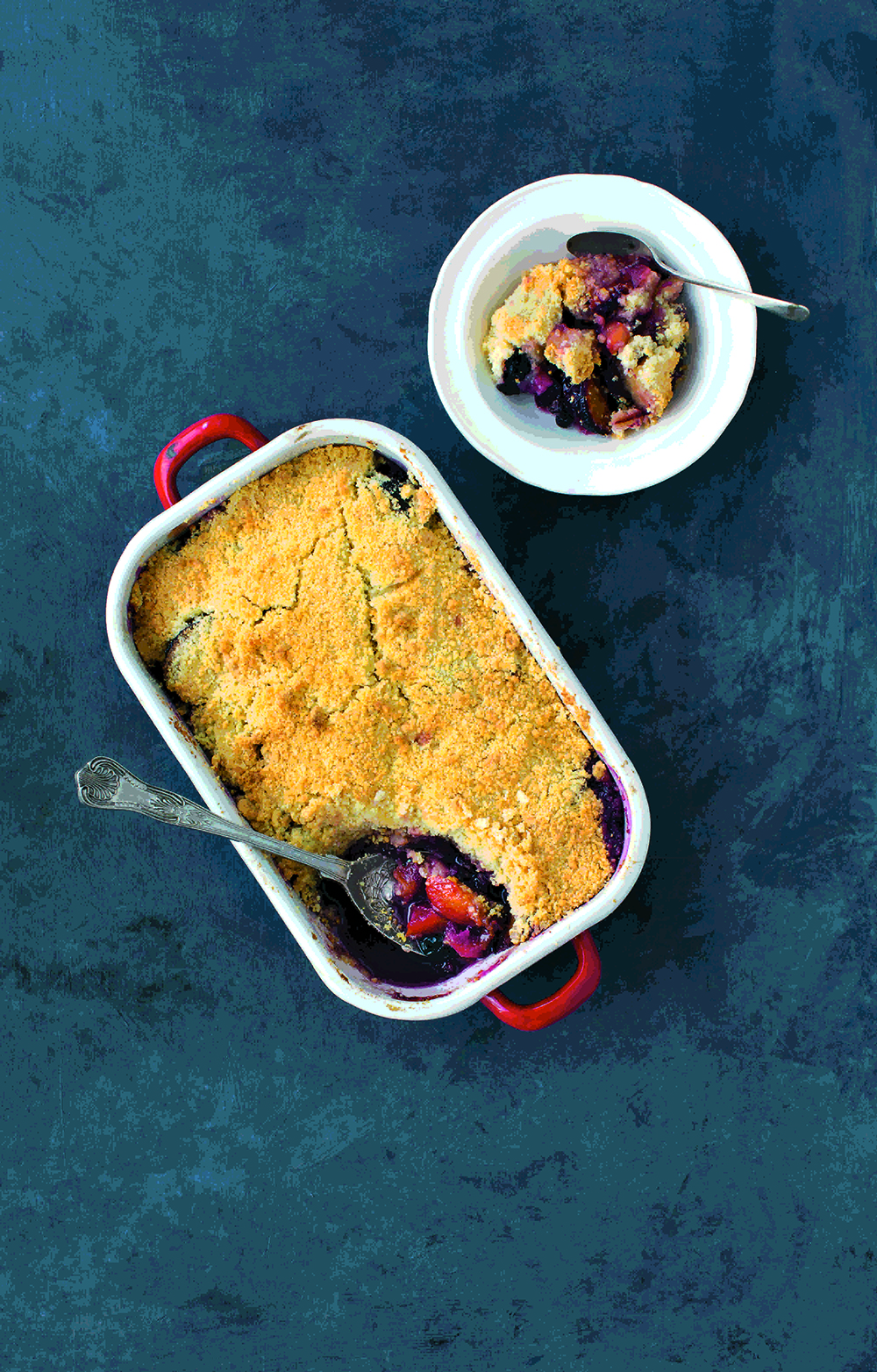Cookery Feature - The Best of Irish Cooking
 It takes confidence to call your book simply The Irish Cookbook, and fortunately that’s something the famous Galway chef, Irish food hero, Irish Time columnist and author, Jp McMahon, has in spades – fortunately for us, that is, as we are all the beneficiaries of his vision, intellectual curiosity and sheer determination to sell the Irish food story at home and abroad.
It takes confidence to call your book simply The Irish Cookbook, and fortunately that’s something the famous Galway chef, Irish food hero, Irish Time columnist and author, Jp McMahon, has in spades – fortunately for us, that is, as we are all the beneficiaries of his vision, intellectual curiosity and sheer determination to sell the Irish food story at home and abroad.
Jp mentioned in a recent interview that each generation needs a fresh introduction to Irish food (or words to that effect) and he has certainly provided that in The Irish Cookbook, which is simultaneously scholarly and accessibly down to earth. Acknowledging the past while celebrating the present and preparing for the future is very much his thing, not only in his Galway restaurants but especially through the astonishingly ambitious global food symposium, Food On The Edge, that he and his team have convened annually in Galway since 2015.
My own all-time favourite Irish cookbook is Florence Irwin’s The Cookin’ Woman (1949), which was a treasured gift from my late mother-in-law. The sheer bravery of the young home economics teacher, who travelled around rural Ulster with everything she needed – including an oven - to teach country people how to cook and eat better, is hard to grasp today, and the recipes are an enduring testament to her practicality.
Other wonderful classics which have imbued later generations with a love of, and respect for, Irish food include Maura Laverty’s Full and Plenty, Monica Sheridan’s The Art of Irish Cooking (1965), Theodora’s FitzGibbons’s A Taste of Ireland (1968) and Traditional Irish Food (1983), Myrtle Allen’s The Ballymaloe Cookbook (1984), Brid Mahon’s Land of Milk and Honey (1991), and these are just a few of the much-loved books that owe inspiration to Ireland and her produce. My own first book Good Food From Ireland (1991) was also a hymn to Ireland’s bounty and, although never a headline grabber, it was always ‘the special one’ for me. Yet many would still argue that we have no real food culture, no ‘cuisine’ as such.
 Well Jp McMahon will soon sort that out. To the doubters – and the young, who have yet to discover the Irish culinary joys that lie in store - I commend The Irish Cookbook. Weighing in at over 1.5kg this beautifully produced volume is perhaps a little heavy for reading in bed but I, for one, will be keeping it handy because it’s a seriously good read as well as a supremely practical cookbook.
Well Jp McMahon will soon sort that out. To the doubters – and the young, who have yet to discover the Irish culinary joys that lie in store - I commend The Irish Cookbook. Weighing in at over 1.5kg this beautifully produced volume is perhaps a little heavy for reading in bed but I, for one, will be keeping it handy because it’s a seriously good read as well as a supremely practical cookbook.
In Jp’s own words, from the introduction: “This book is not a history of Irish food. No book is definitive. Rather, it is a present understanding of the lay of the land, what food in Ireland was, how it was used, how it was not and, ultimately, what Irish food can be. I hope you enjoy this journey of discovery. To understand the new Irish cuisine that has come about in recent years, we need to look backwards as well as forwards, to understand what food this island has given to us. We need to celebrate this food in our imaginations as well as our bellies!”
The Irish Cookbook by Jp McMahon is published by Phaidon (£35). Photography & Styling: Anita Murphy and Zania Koppe
RECIPES:
The Irish Cookbook includes modern recipes – and some old ones with a modern interpretation – but respect for the traditional foods of Ireland is the foundation. The recipes below seem especially appropriate around the time when the world turns green for St Patrick’s Day, but books like this encourage a return to ‘good home cooking’ and I suspect that all of us will be glad of that in the times ahead.
Nettle Soup
“When I was young, I never knew you could eat nettles. Then I found a book called Wild and Free. It was published the year I was born: 1978. It detailed how the Irish people of the early Christian era enjoyed a nettle broth for sustenance. Indeed, nettles have been eaten in Ireland since the Bronze Age. Of course, this was long before the potato came to Ireland, so oats were used to thicken the soup. It was probably more of a gruel, a rough pottage, made simply from butter, oats, milk and nettles. Wild leeks and wild garlic (ramps) would also have been used. Most nettle soup nowadays is thickened with potato instead of oats. I find the addition of spinach leaves or wild sea beet helps the flavour of the soup because nettles can be quite astringent. Chopped bacon can be added for those who want to add substance to the dish.”
Preparation: 20 minutes
Cooking: 30 minutes
Serves 4
100 g/31⁄2 oz (7 tablespoons) butter
2 onions, diced
1 leek, chopped
a few sprigs of thyme and rosemary
200 g/7 oz (1 large) potato, diced
1 litre/34 fl oz (41⁄4 cups) vegetable stock (broth)
200 g/7 oz stinging nettles, washed, leaves picked
100 g/31⁄2 oz (31⁄2 cups) spinach, washed
25 g/1 oz wild garlic (ramps), optional
25 g/1 oz sea beet (optional)
100 ml/31⁄2 fl oz (scant 1⁄2 cup) double (heavy) cream
sea salt
Melt the butter in a large pan over a medium heat. When it starts to foam, add the diced onions and chopped leek. Season with a little sea salt. Add the thyme and rosemary. Cook for about 5–7 minutes until translucent.
Add the chopped potato. Fry for a further minute, then add the vegetable stock (broth). Bring to the boil and simmer for about 15 minutes until the potato is soft.
Add the nettles, spinach, wild garlic and sea beet (if using). Simmer for a minute and then blend with an immersion blender until smooth. Press through a fine sieve.
Add the cream and return to the heat until warm. Season to taste.
 Oysters with Wild Garlic Butter
Oysters with Wild Garlic Butter
[Wild garlic is abundant in Ireland throughout the spring, and foraged widely. Enjoyed for its colour, flavour and provenance, it features in a number of Jp’s recipes in The Irish Cookbook. Pacific (gigas) oysters are most usual in hot oyster dishes and available all year, while the flat native oysters (Ostrea edulis) are seasonal and available only in the cooler months, with a ‘r’ in the name (Sep-Apr). GC]
Preparation: 15 minutes
Cooking: 2 minutes
Serves 4
8 oysters
brown soda bread, to serve
For the wild garlic butter
450 g/1 lb (4 sticks) butter, room temperature
75 g/2 3⁄4 oz (2⁄3cup) wild garlic (ramps)
apple cider vinegar, to taste
sea salt
Put the butter and wild garlic (ramps) into a food processor and blend together. Season with the vinegar and salt. Form into a cylinder by wrapping in a piece of cling film (plastic wrap) and refrigerate until required.
Preheat the grill (broiler). Shuck the oysters and detach from the shell. Place a knob (pat) of the butter into each oyster. Grill (broil) the oysters for about 2 minutes until the butter begins to bubble.
Serve with some brown soda bread.
Bacon and Cabbage with Parsley Sauce
This is a very famous Irish dish, and it was also the inspiration for the corned beef and cabbage so popular in the United States on St Patrick’s Day, with the salted pork being replaced by salted beef. This isn’t eaten together so much in Ireland, but we do eat corned beef, for which there is also a recipe in The Irish Cookbook.
Preparation: 25 minutes
Cooking: 2 hours 15 minutes
Serves 4
1 onion, peeled
a few whole cloves
1 × 1.5kg/3 1⁄4lb piece of bacon loin (shoulder butt or loin of pork), skin on
Parsley Sauce (see page 380), to serve
To crumb the bacon
25 g/1 oz (2 tablespoons) granulated sugar
50 g/2 oz (1 cup) fresh breadcrumbs thyme leaves
For the cabbage
1 white (green) cabbage, core removed and thinly sliced
75 g/23⁄4 oz (51⁄2 tablespoons) butter
250 ml/8 fl oz (1 cup) reserved bacon stock (broth)
freshly ground black pepper
3 tablespoons chopped parsley
Stud the onion with cloves and put into a large pan with the bacon, cover with water and bring to the boil over a high heat. Reduce the heat and simmer gently for
1 hour to 1 hour 30 minutes, topping up with water to cover if needed.
Strain through a sieve and reserve 250 ml/8 fl oz (1 cup) of the water. Pat the bacon dry with paper towels and remove the skin. Discard the onion.
Preheat the oven to 200°C/400°F/ Gas Mark 6.
Combine the sugar, breadcrumbs and thyme and pat evenly all over the bacon. Put into a roasting pan and bake in the preheated oven for 30–40 minutes until the top has caramelized.
Meanwhile, put the cabbage into a large pan with the reserved water and the butter. Simmer over a medium heat for 10 minutes until soft. Season with black pepper and add the chopped parsley.
Carve the bacon and serve with the cabbage and Parsley Sauce.
Parsley Sauce
Parsley sauce is a traditional accompaniment for bacon and cabbage. Essentially, it is a béchamel (white) sauce containing chopped parsley. There are many different variations in many Irish cookbooks, containing white pepper, mace, bay leaf and garlic as additional seasonings. Feel free to change the herbs as desired.
Preparation: 5 minutes
Cooking: 15 minutes
Serves 6–8
500 ml/17 fl oz (generous 2 cups) milk
50 g/2 oz (4 tablespoons) butter
50 g/2 oz (1/3cup) plain (all-purpose) flour
250 ml/8 fl oz (1 cup) bacon, ham or vegetable stock (broth)
a small handful of parsley, leaves picked and chopped
sea salt
Warm the milk in a small pan.
Melt the butter in a separate small pan over a low heat and stir in the flour. Cook for 2 minutes to form a paste. Slowly add the warm milk until it is all incorporated into the mixture.
 My Great-aunt Kay’s Fruit Crumble
My Great-aunt Kay’s Fruit Crumble
This is a fruit crumble (crisp) from my great-aunt Kay Clinch, who was born in the 1920s. It doesn’t specify the fruit, so use whatever is in season. The only change I made was to use butter instead of margarine. My aunty Anne made this crumble many times and testifies to its deliciousness!
Preparation: 15 minutes
Cooking: 35 minutes
Serves 4
500 g/1 lb 2 oz prepared fruit (about 4 cups) such as apple, rhubarb, plums or blackberries
100 g/31⁄2 oz (1⁄2 cup) caster (superfine) sugar
150 g/5 oz self-raising flour (11⁄4 cups all-purpose flour mixed with 13⁄4 teaspoons baking powder)
75 g/23⁄4 oz (51⁄2 tablespoons) butter
Preheat the oven to 180°C/350°F/ Gas Mark 4.
Coat the fruit with half the sugar and place in an ovenproof dish.
To make the crumble (crumb topping), rub the flour and butter together with your fingertips until the mixture resembles breadcrumbs. Fold in the rest of the sugar.
Cover the fruit with the crumble and bake in the preheated oven for 35 minutes until golden brown.





There are currently no comments
Leave a comment
Not a member? Register for your free membership now!
Or leave a comment by logging in with: